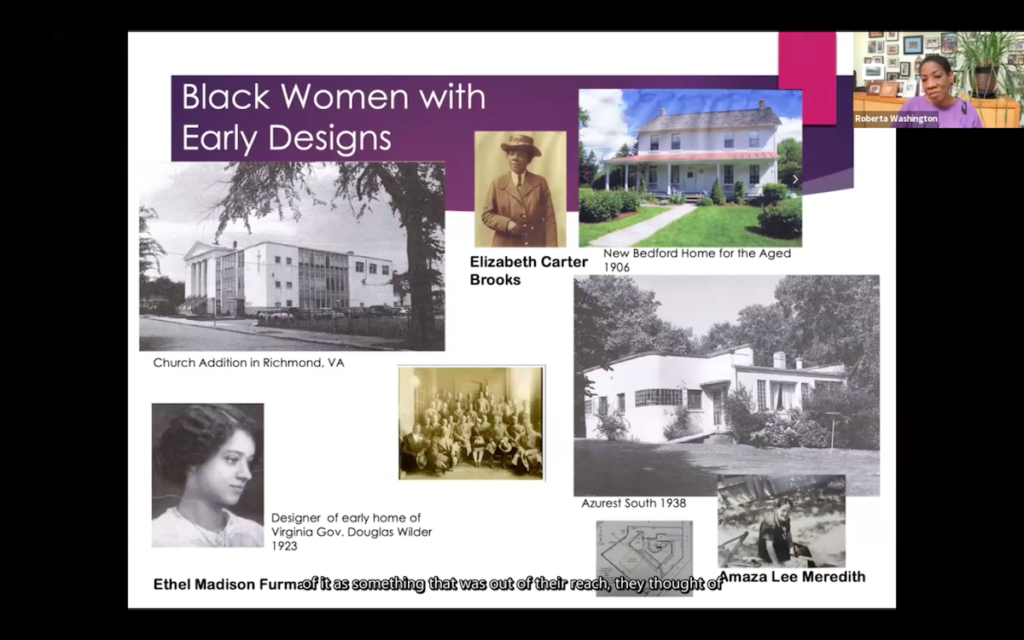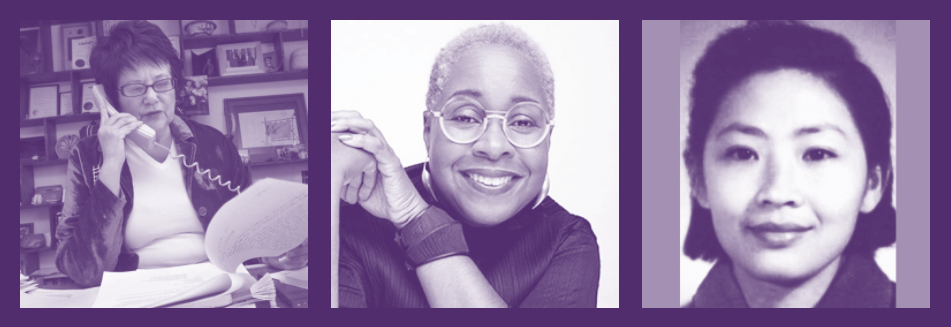“‘How many Black urbanists can you name? How many Latinx architects from the 20th century do you know? Maybe one? None?’ These are the questions we started with,” says Hansy Better Barraza, outlining the impetus for her spring class, “Hidden Figures: The City, Architecture and the Construction of Race and Gender.” “By the end of the course you should come away with at least 10,” she told her students, aiming to redirect focus to the field’s marginalized practitioners and give them space to shine.
The course turned out to be a particularly productive one: it generated Transforming the Timeline, a student-led initiative that features a diverse set of women who have shaped the world through their leadership in design, activism, and art. The students built an Instagram account and a website, and the class sparked a subsequent panel discussion—funded by a grant from the Harvard Graduate School of Design’s Racial Equity and Anti-Racism Fund—with the goal of investigating and reinstating authorship over histories of the built environment.
Let’s post our panel discussion online, let’s do a website, let’s make an IG page, let this knowledge be free and dispersed. It’s just so much more powerful when made public.
On sharing coursework beyond the classroom.
Better Barraza, a visiting professor, is both an architect and an activist. A cofounder of Studio Luz Architects in Boston, she also cofounded BR+A+CE: Building Research + Architecture + Community Exchange, a nonprofit that joins artists and designers with community members to create new spaces and events that benefit the communities in which they are located. Her communal design approach wove its way into the course: “A research paper is only read by the student and their instructor and is then stacked in a folder,” Better Barraza says. “I thought instead, Let’s post our panel discussion online, let’s do a website, let’s make an IG page, let this knowledge be free and dispersed. It’s just so much more powerful when made public.”
With Transforming the Timeline, the students have launched a website that reexamines the historical trajectory of design and architecture. They write, “Since its conception, the academy has convinced generations of architecture students to trust in the white male voice as a neutral, universal norm.” And they highlight the constructed nature of the historical narrative—a narrative with a position and a point of view that reflects canonized figures. But what, and who, lies beneath? The website marries the contemporary and the historical to document and “amplify women whose names are not included in architectural discourse, curriculum, syllabi, or survey text.”
Looking back at the mid-19th century, the students have unearthed female, Black, queer, Latinx, and other marginalized architects that were present, engaged, and contributing to the development of the urban form. Likewise, the panel discussion included female and nonbinary powerhouses in touch with past and present. Architect Roberta Washington lectured on the history and contribution of Black architects, for example, and artist Marcela Pardo Ariza touched on artistic gestures that can infiltrate art and cultural institutions.

While researching case studies for the course, the students used their own ethnic and geographical identities as touchstones. “You come from somewhere, those roots have shaped who you are,” Better Barraza says. She finds that contextualizing via personal background can be a compass to locate others that came before. “Belonging is key!” she emphasizes, for young designers and artists. To contribute to the discipline, “to find and acknowledge (one’s) culture. . . these are the histories that need to be talked about.” When students tie their own histories and origins to earlier working architects, it helps them to not only exist within the field, but to push it further. “Ultimately,” she explains, “these alternative bodies of knowledge will help transform the discipline.”
View this post on Instagram
The @transformingthetimeline Instagram account includes a series of blurry photos and asks viewers to “swipe left to reveal the hidden figure.” Each caption tells the story of the featured woman. Click on the Instagram post above to learn more about Abra Lee, a horticulturist, writer, educator, and historian.
